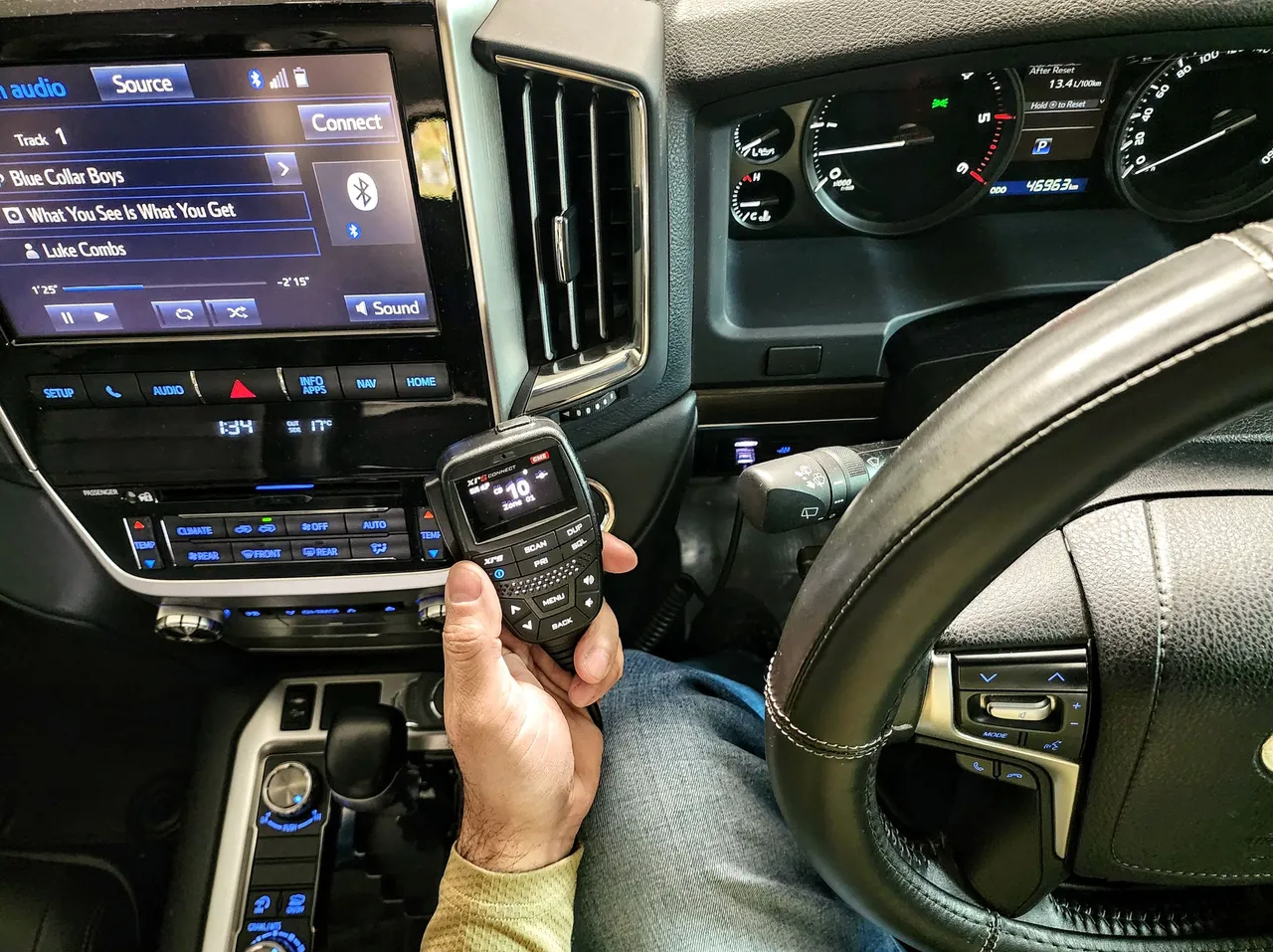
For many years I've used radios to communicate, radios that operate on HF, VHF, and UHF frequency bands, among others.
It can be a complicated thing really, the science behind it, but systems like hand-held walkie talkies, vehicle-mounted systems such as Codan HF and personnel-carried (manpack) versions like the RF-7800M-MP, land-location based mobile radio systems and airborne systems all essentially do the same thing...allow communication...and with training can be easy to use.
Communication can be critical and whether it's a military, law enforcement, emergency services, commercial communication or citizen communication application (or the many other types of short, medium and long range communication) radios are utilised. Some may say satellite systems supersede radio-comms but nah not really, it's just a different way to communicate and there's room and a need for both at the moment.
Anyway, I was recently talking to a chap who is just getting into off-road and remote travel and we were talking about communications - it is such an important part of safe remote travel in Australia. The bulk of the conversation was about satellite comms (sat-phones) and products like Zoleo, (a cool thing indeed), as long distance comms can save lives, but there's still a strong use-case for CB UHF (citizen band UHF radio) and I'd never be without it and I indicated that he should feel the same way.
As we talked, it became apparent he had no clue (through never having need to) and we talked about why it's important; situations like communication (comms) between vehicles travelling in convoy, other vehicles ahead and behind for road and weather conditions and heavy transport (trucking) operators who are awesome at relaying critical information are good uses and also for spotting in an external person to driver scenario when tackling very difficult terrain in low range four wheel drive where wheel placement is critical. of course, person to person comms when hiking and in wilderness areas is also so important.
The chap asked how he's supposed to know and remember the right UHF CB channel to use and what not to use...I went through it verbally but ended up doing a spreadsheet later for him to laminate and keep in his vehicle. So...here's the list (in Australia.)
- 1 to 8: Designated (under law) send-to-repeater channels to extend range
- 5: Everyone can use it but only in emergency situations (under law)
- 9: A conversation channel
- 10: Campers, off-roaders, 4x4 clubs for convoy travel and in National Parks
- 12 to 17: Conversation channels
- 18: Holiday-makers, caravaners etc.
- 19 to 21: Conversation channels
- 22 to 23: Data transmission - no conversation at all (under law)
- 24 to 30: Conversation channels
- 29: Highway channels (Bruce Highway, Queensland and Pacific Highway, New South Wales)
- 31 to 38: Received from a repeater and re-transmit to channels 1 to 8 to extend range (under law)
- 35: Emergency use (an option to channel 5)
- 39: Conversation channel
- 40: Highway users (particularly truck drivers)
- 41 to 48: The same as channels 1 to 8 send-to-repeater channels to extend range (under law)
- 49 to 60: New channels - Conversational use
- 61 to 63: Reserved for future expansion
- 64-70: Conversation channels
- 71 to 78: New channels received from a repeater and re-transmit to channels 41 to 48 to extend range (under law)
- 79 to 80: New channels for conversation use
Being on the wrong channel can bring huge fines; say for instance you were using channel 5 (emergency channel) for general conversation...$165,000 fine. That's a lot of money, but if one was to actually interfere with an emergency call, that's up to $550,000 in fines and 5 years in prison. So, knowing which channel can be important for this and many other reasons.
Lives depend on effective communication and farmers use CB UHF to turn pumps on and off, open gates and such things as well, that's why it's important to know what channel to be on and what not to use and I couldn't impress that upon my friend enough which is why he laminated my spreadsheet and it's in his truck...I have one in my own truck for those that travel with me who may not know the above channel usage - I also keep up to date as things change.
Travelling remotely is no joke in Australia, it kills people often, and travelling a land as big as this with (often) nothing and no one around - even on established blacktop roads such as the Eyre Highway, a 1,664-kilometre highway that links Western Australia and South Australia (across the Nullarbor Plain) - is where effective communications and knowing what's up matters.
What's been your experiences with radio communications, if any? Feel free to comment or ask any questions...but only if you bothered to read the post initially.
Design and create your ideal life, tomorrow isn't promised - galenkp
[Original and AI free]
Image(s) in this post are my own